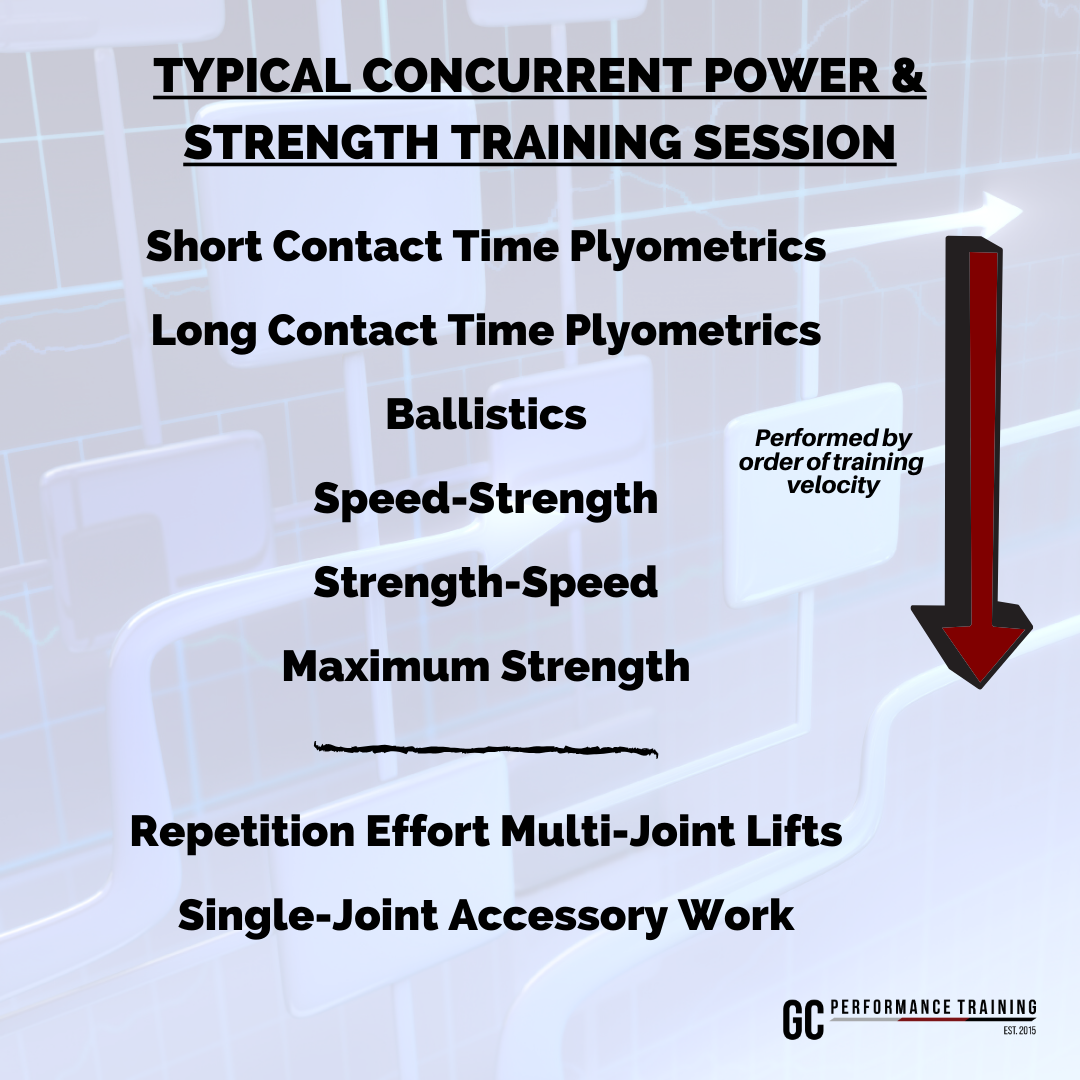Exercise Order - Principles For Sequencing A Training Session
The main goal of exercise sequencing when training athletic qualities concurrently (plyometric ability, rate of force development, maximum force output, muscular endurance, etc ) is to optimize the training adaptations from each single modality and reduce the detrimental effects of neuromuscular fatigue.
Optimizing exercise order is driven by two interrelated principles: fatigability and priority.
Given that you are able to select a handful of exercises that have a good chance of influencing strength & conditioning performance measures in athletes, you must be able to sequence each training session with the exercises in the “correct” order.
I say the word “correct” very cautiously as there are no absolute truths or right or wrong in the complex, unpredictable world of human performance. To navigate through the unpredictable nature of training, it pays off greatly to have a set of principles to prescribe and coach by, while still leaving room for flexibility when new information or new prioritizations arise.
Principles for sequencing a training session
The main goal of exercise sequencing when training athletic qualities concurrently (plyometric ability, rate of force development, maximum force output, muscular endurance, etc ) is to optimize the training adaptations from each single modality and reduce the detrimental effects of neuromuscular fatigue.
Optimizing exercise order is driven by two interrelated principles: fatigability and priority.
Fatigability
The principle of fatigability accounts for each exercise modality’s sensitivity to neuromuscular fatigue. Exercises that require high nervous system output and higher physiological and psychological readiness are more susceptible to performance detriments due to fatigue.
One explanation for this lie in the physiological characteristics of our muscle fibers. Fast-twitch, type 2 muscle fibers possess higher contractile speeds and a higher potential to produce contractile force. For this reason, they are favored during exercises that demand high-velocities and high-force outputs. Type 1 muscle fibers in contrast, are more resistant to fatigue due to their higher oxidative properties but as a consequence, have lower force-producing capabilities.
The larger velocity and force demands, the shorter they can be sustained for.
Following the principle of fatigability, exercises modalities like plyometrics, ballistic and maximum strength should then be performed first if they are to be trained concurrently within a training session.
Accessory exercises that are single-joint in nature, aimed at smaller muscles groups can be placed in the latter half of a training session. Their relatively low technical and neuromuscular demands means their effectiveness will not be diminished to the same degree with the onset of fatigue.
Priority
The principle of priority is highly correlated to the principle of fatigue, and states that an athlete should be performing the exercises that are most important to their primary training goal, at a time when they have the most resources to do so. From an energetic and fatigue standpoint, this usually means the beginning of a training session when the athletes are at their highest point of psychological and physiological readiness (after a proper warm-up of course).
Not including the athletes at the ends of the endurance-strength spectrum (like endurance cyclists and powerlifters) the primary goal of many athletes is to develop higher rate of force development (RFD) / power and transfer this improved athleticism to sport-specific skills. Strength training is a secondary goal but must also be considered as it is crucial for second order effects such as injury risk reduction, slower-velocity force production and carryover to RFD training.
If your primary goal however, is to develop maximum strength, heavy compound lifts should come before high-velocity training. This sequencing does not follow the principle of fatigability, but satisfies the principle of prioritization.
the contrast training exception
Contrast training offers an exception to the principles of fatigability and priority, where heavy compound lifts are deliberately performed first to elicit a post-activation-potentiation (PAP) effect, even if RFD/power is the primary goal.
PAP is a physiological/neurological phenomenon where RDF/power is increased due to previous near-maximal muscle contractions. You’ve probably seen protocols utilized by strength & conditioning coaches such as heavy back squats paired with sprinting and jumping, or heavy presses paired with ballistic medicine ball throws and slams.
While the most common form of potentiating modality is maximum strength (85-100% of 1RM or <0.5m/s bar speed if you’re using VBT), I, along with other coaches I’ve communicated with, have had success using strength-speed exercises as a potentiating modality. Exercises like weighted trapbar jumps or Olympic weightlifting variations, loaded to achieve velocities around 0.75 - 1.0m/s.
Isolating Before Integrating in Rehabilitation & Return-To-Play settings
In the context of rehabilitation, priority is given to exercises that are aimed towards rebuilding the capacity of the injured muscle, joint, tendons and/or ligaments. In my return-to-play protocols for my athletes, I will place single-joint, stability and balance-based exercises in the beginning of the training session before integrating them back into strength and plyometric exercise regressions.
Since our main goal is rebuilding the athletes’ capacities, velocities and force-outputs are not expected to be high, therefore there will be little detrimental effects to placing those exercises last.
Anecdotally, my athlete’s have reported feeling more confident in performing strength and plyometric exercises after an extended warm up and emphasis on their injured area.
Wrapping it up
Exercise sequencing should be individualized on an athlete-by-athlete basis using the principles of fatigability and priority, while taking into account special circumstances like performing advanced training protocols or managing injured athletes. While some can argue exercise selection has a larger impact influencing performance outcomes and that exercise order is of less importance, using principles for exercise sequencing bring a consistent and strategic approach to the design and implementation of a training session that cannot be overlooked by high performance athletes and coaches.









